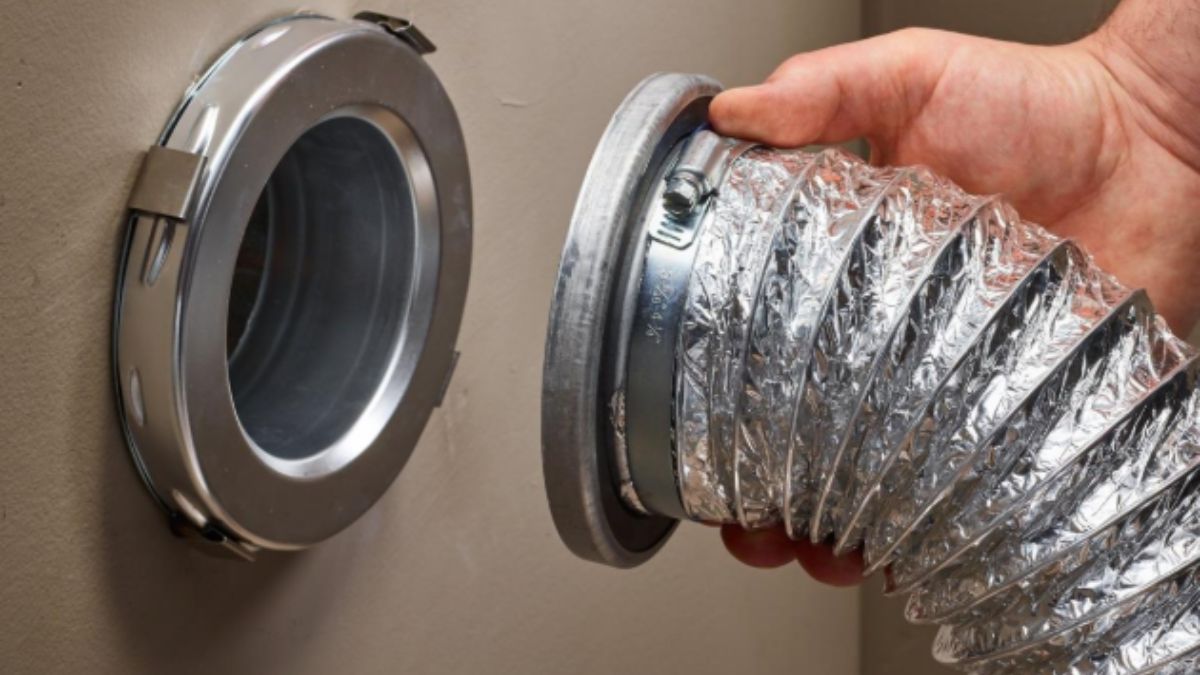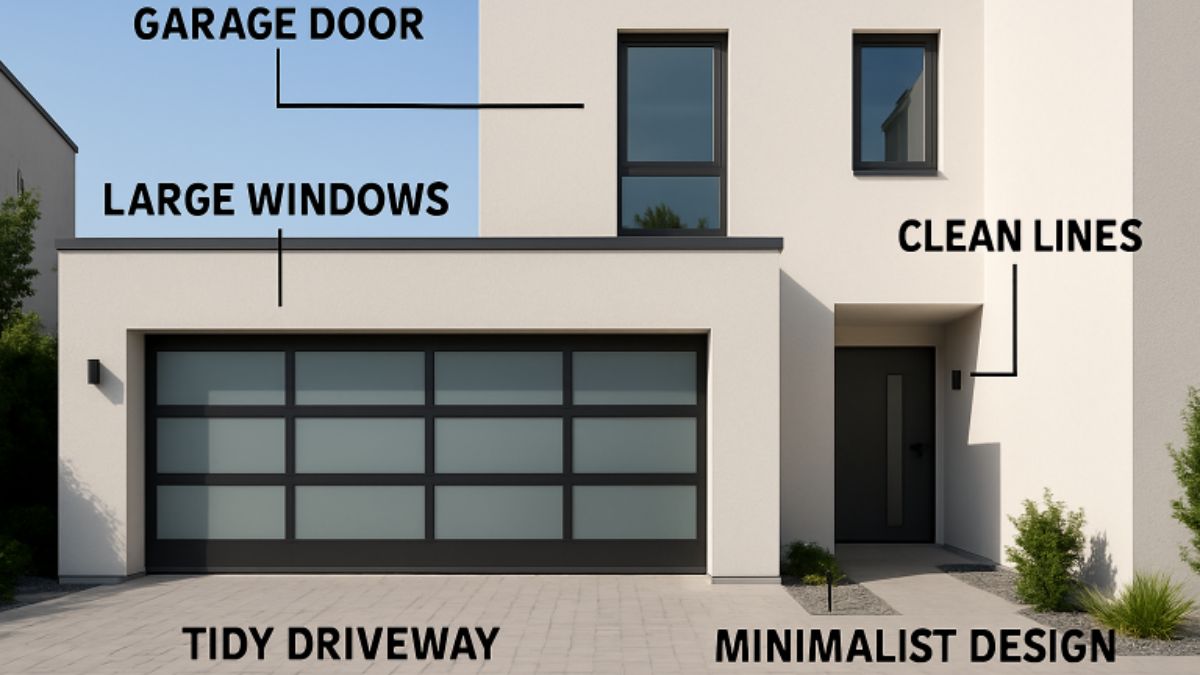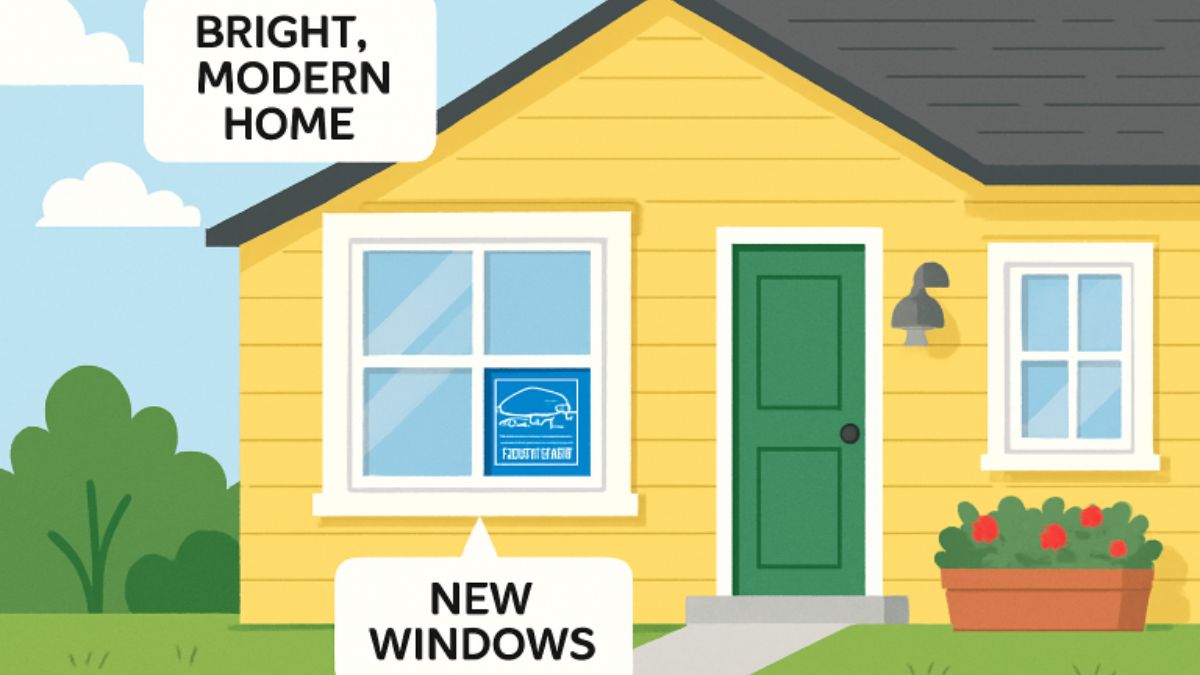HOME IMPROVEMENT
Essential Tips for Dryer Vent Maintenance: Keeping Your Home Safe and Efficient

Understanding the Importance of Dryer Vent Maintenance
Routine dryer vent maintenance is not just about keeping your dryer running smoothly; it’s about protecting your home. When vents become clogged with lint, they restrict airflow, causing the dryer to overheat and, in severe cases, catch fire. A service like Home Safe Commercial & Home provides essential advice on preventing hazards through consistent cleaning routines. By recognizing and addressing these risks, you protect both your property and your family’s health.
Furthermore, a well-maintained dryer vent can lead to significant energy savings. Ensuring that the vent is free of obstructions enhances the dryer’s efficiency, enabling it to use less energy to achieve identical drying results. This efficiency translates to reduced utility bills and less wear and tear on your appliance, thereby extending its lifespan. Investing time and effort in routine dryer vent maintenance can help you enjoy economic and safety benefits.
Signs That Your Dryer Vent Needs Cleaning
Identifying when your dryer vent requires cleaning is crucial to maintaining your dryer’s performance and safety. If the clothes take noticeably longer to dry, it could indicate that the vent is full of lint. This obstruction forces the dryer to work harder, expending more energy and time to dry the clothes properly. If you notice your dryer emitting a burning smell, it could indicate lint buildup—a fire hazard that requires immediate attention. Additionally, pay close attention to the temperature in your laundry room; if it feels hot, it might be because the heat is not safely venting outside.
Early identification of these indicators is crucial in preventing more serious issues in the future, thereby reducing the expenses associated with repairs or premature appliance replacement. Prompt action can contribute to your dryer’s durability and safety if you observe these signs.
Step-by-Step Guide to Cleaning Your Dryer Vent
- Gather Essential Tools: Before beginning, you’ll need a vacuum cleaner to remove loose lint, a dryer vent cleaning kit with flexible rods, a brush, and a screwdriver to detach the vent.
- Unplug the Dryer: To avoid electric shock, please unplug the dryer from the power source.
- Detach the Vent: Use the screwdriver to carefully loosen the vent clamp connecting the dryer to the wall. This clamp is at the back of the dryer.
- Clean the Vent: Insert the brush from the cleaning kit into the vent, turning it gently to loosen lint and debris. Use the vacuum to remove the loosened lint for a thorough cleaning.
- Reattach and Test: Once the cleaning process is complete, firmly reattach the vent to the dryer and reconnect it to the power source. Conduct a test run with a laundry load to verify that the vent is unobstructed and has proper airflow.
Implementing these steps can improve your dryer’s performance and reduce the fire risk. Adhering to safety measures, including disconnecting the appliance from the electrical supply, is essential to guarantee a secure cleaning procedure.
When to Call a Professional
In several scenarios, enlisting the help of professionals is the best course of action. For homes with complex vent systems—those with long or winding passageways—professional services provide thorough cleaning solutions that might not be possible through DIY efforts. Professional cleaners have industrial-grade tools that effectively reach all areas of the vent system, ensuring optimal cleanliness and safety. Though professional services have a cost, they are an investment in your home’s safety that can save you more in the long run by reducing energy costs and avoiding major repairs.
Choosing the Right Professional Service
Selecting a reliable dryer vent cleaning service requires careful consideration. Start by checking potential service providers’ credentials to ensure they possess the necessary skills and certifications. Reading customer reviews and testimonials can provide insights into the quality of their work and customer satisfaction. Verifying that their cleaning methods suit your dryer’s brand and model is also beneficial. Engaging a reliable service guarantees that your dryer vent is effectively cleaned and maintained in a safe operating condition.
Benefits of Regular Dryer Vent Maintenance
The advantages of regularly maintaining your dryer vent are substantial. Beyond minimizing fire risks, regular maintenance enhances the dryer’s overall efficiency. This improved efficiency results in quicker drying times for clothing while consuming less energy, potentially reducing energy expenses. According to the National Fire Protection Association, these steps are part of a broader approach to reducing fire hazards in the home. Moreover, keeping the vent clean minimizes the strain on your dryer, extending its life and reducing the likelihood of needing expensive repairs or replacements.
DIY vs. Professional: Weighing the Pros and Cons
Both DIY and professional cleaning approaches have their pros and cons. DIY cleaning is accessible and more cost-effective for simple dryer vent systems. However, the expertise and equipment of professional services can be invaluable for those with complex or extended ductwork. For homeowners considering the DIY route, resources such as CBS NEWS offer comprehensive guides on maintaining safety during these tasks. Ultimately, the decision comes down to the job’s complexity and personal preference; ensuring the vent is clean and safe is the priority.
Maintaining Safety Beyond Dryer Vents
Ensuring proper maintenance of dryer vents is essential, but it is also necessary to consider the comprehensive aspect of safety within the home. Regular check-ups of other systems, such as HVAC or electrical panels, contribute significantly to your household’s overall security and efficiency. By including these checks in your routine maintenance schedule, you can prevent potential hazards and create a more secure environment for your family. Developing a maintenance plan ensures that each part of your home functions efficiently and safely, offering peace of mind and longevity to your home’s appliances and systems.
HOME IMPROVEMENT
How Modern Garage Doors Enhance Home Design

Modern garage doors are no longer just a functional entry to your home—they set the tone for your property’s overall aesthetic, blending security and style in one seamless package. As more homeowners seek to enhance both curb appeal and functionality, the garage door is rapidly becoming a design focal point, whether building new or renovating. For residents seeking professional installation or service, a Broomfield garage door company can help you select and maintain modern options that make a lasting impression. Today’s garage doors offer numerous benefits that extend far beyond their appearance. Superior insulation, innovative automation features, and durable materials provide long-term performance and value, supporting both green living goals and enhanced home security. With the right customization options, a well-designed garage door can significantly enhance the overall appearance and ambiance of a property.
Aesthetic Appeal
The visual impact of a garage door is more significant than many homeowners realize. Modern designs emphasize minimalism with flush panels, muted color palettes, and hidden hardware, ensuring the door complements modern architecture. Large glass panels, bold geometric patterns, and custom finishes allow the garage door to serve as an integral exterior design element, rather than just an afterthought. According to Architectural Digest, a striking garage door can significantly enhance a home’s first impression, which is crucial for both pride of ownership and future resale potential.
Material Innovations
Garage door materials have seen significant advancements in recent years. Homeowners can now choose from a wide variety of materials, including fiberglass, aluminum, steel, and specialty composites. These options combine enhanced durability with minimal maintenance, all while remaining highly customizable. For example, steel and fiberglass can be embossed with wood grain patterns, giving the warm appearance of natural wood without the upkeep. Light-weight, rust-resistant aluminum is an ideal choice for larger doors and contemporary homes, combining longevity with a fresh, modern appeal.
Smart Technology Integration
The evolution of smart home technology includes the garage. Today’s garage doors can be connected to Wi-Fi, enabling remote monitoring and control directly from your smartphone. Features like voice control (compatible with Amazon Alexa or Google Assistant), real-time activity alerts, and geofencing provide unmatched convenience and peace of mind. Homeowners can give secure, temporary access to delivery drivers or guests and review activity history for added security. Innovative garage systems are now just as essential to home tech setups as video doorbells and smart thermostats.
Energy Efficiency
As sustainability and cost savings take center stage in home improvement projects, energy-efficient garage doors have gained significant popularity. Insulated models help stabilize temperatures, reducing the burden on heating and cooling systems and keeping garages—often used as workspaces or home gyms—comfortable throughout the year. Many manufacturers now utilize recycled steel, aluminum, or eco-friendly insulation materials, making new doors a sound choice for those seeking to minimize their environmental impact.
Customization Options
Modern garage doors offer virtually limitless customization choices. Homeowners can select from a wide range of colors, finishes, window styles, and decorative hardware to match or enhance the existing exterior. Bolder colors, such as deep blue, forest green, and matte black, have surged in popularity, transforming the garage into a possible statement piece. These choices allow for coordinated designs that integrate seamlessly with other exterior updates, such as new entry doors or updated siding.
Enhanced Security Features
Security is a top consideration when upgrading a garage door. Newer doors come standard with robust locking mechanisms, rolling code technology that changes access codes after every use, and full integration with comprehensive home security systems. Real-time alerts ensure you’re notified of any unusual activity, and remote operation removes the worry of accidentally leaving the door open. This combination of technology and hardware gives homeowners confidence that their garage—and everything in it—is protected.
Increased Property Value
Swapping out an outdated garage door for a modern, insulated, and tech-enabled model can provide one of the highest returns on investment of any home upgrade. Attractive, functional garage doors increase curb appeal—often cited by real estate agents as a key factor in a home’s marketability. With features that appeal to today’s buyers, like energy efficiency and intelligent control, a modern garage door makes your property stand out in a competitive market.
Conclusion
Updating your garage door is about far more than function. The right modern garage door can redefine the appearance, comfort, security, and value of your home. By choosing today’s innovative materials, leveraging smart technologies, and seeking out expert installation through proven professionals, you can ensure your garage door adds both beauty and practicality for years to come.
HOME IMPROVEMENT
Janitor AI: Contributes to Eco-Friendly Cleaning Practices

Imagine a world where cleaning doesn’t just mean scrubbing away dirt but also contributes to a healthier planet. Enter janitor AI—a revolutionary technology transforming how we think about cleaning practices. This innovative solution not only streamlines the process of keeping spaces tidy but does so in an eco-friendly manner that can significantly reduce our environmental footprint.
Janitor AI combines artificial intelligence with cutting-edge cleaning techniques, providing businesses and individuals alike with smarter ways to maintain cleanliness while prioritizing sustainability. As more people become aware of their environmental impact, the need for greener solutions has never been greater. Janitor AI is leading the charge, proving that effective cleaning and eco-consciousness can go hand in hand. Let’s dive deeper into what makes janitor AI a game-changer in sustainable cleaning practices!
What is Janitor AI?
Janitor AI is an innovative technology that transforms the way cleaning services operate. It utilizes artificial intelligence to streamline and enhance various cleaning tasks, making them more efficient.
This smart system can analyze data related to cleanliness levels, foot traffic, and specific cleaning needs. By doing so, it optimizes schedules and resource allocation for janitorial staff.
With real-time monitoring capabilities, Janitor AI ensures that areas are cleaned as needed rather than on a fixed schedule. This adaptability not only saves time but also reduces waste in both products and labor.
Moreover, it generates reports that help facility managers make informed decisions about their cleaning strategies. By leveraging advanced algorithms, this technology represents a significant shift from traditional methods of maintaining cleanliness in spaces large and small.
Advantages of using janitor AI compared to traditional cleaning methods
Janitor AI revolutionizes the cleaning industry with its advanced technology. Unlike traditional methods, it leverages data analysis to optimize cleaning schedules and techniques.
Efficiency is a key advantage. Janitor AI can adapt to various environments, ensuring thorough cleaning without wasting resources or time. This means cleaner spaces at a lower operational cost.
Consistency in performance stands out as well. While human cleaners might have varying levels of effectiveness, Janitor AI provides uniformity across all tasks. Every corner gets attention every single time.
Another benefit is real-time monitoring. The AI can detect areas that need urgent cleaning based on foot traffic patterns or dirt accumulation. This proactive approach minimizes issues before they arise.
Additionally, integrating janitor AI helps reduce reliance on harsh chemicals commonly used in traditional cleaning processes. It encourages safer and healthier environments for everyone involved.
Eco-friendly features of janitor AI
Janitor AI integrates advanced technology to promote eco-friendly cleaning solutions. One of its standout features is the ability to optimize resource usage, minimizing water waste and reducing chemical consumption.
Through smart scheduling, Janitor AI can assess when and where cleaning is most needed. This targeted approach helps avoid unnecessary cleanings, conserving both time and energy.
Additionally, it often utilizes green cleaning products that are less harmful to the environment. These sustainable alternatives help maintain a healthy indoor atmosphere while being effective against dirt and germs.
The data-driven insights provided by Janitor further enable facilities to track their environmental impact over time. By analyzing usage patterns, businesses can make informed adjustments to improve sustainability continuously.
With these features combined, Janitor AI stands out as a powerful tool for organizations committed to environmentally responsible practices in their operations.
Case studies of companies successfully implementing janitor AI for sustainable cleaning
Several companies have embraced janitor AI, achieving remarkable results in sustainable cleaning.
A tech giant integrated janitor into its offices. This led to a significant reduction in waste from cleaning supplies. Their automated systems optimized usage and minimized excess product overflow.
In the hospitality sector, a renowned hotel chain adopted janitor to enhance guest experiences while promoting eco-friendliness. The system enabled precise scheduling of cleanings based on occupancy rates, ensuring resources were used only when necessary.
Another example is a manufacturing facility that implemented janitor AI for smarter inventory management of cleaning materials. They reported reduced costs and lower environmental impact by using fewer chemicals without compromising hygiene standards.
These case studies illustrate how various industries are leveraging technology to create cleaner environments while prioritizing sustainability initiatives.
Challenges and limitations of janitor AI in the cleaning industry
Janitor AI, while promising, faces several challenges in the cleaning industry. One significant hurdle is the initial cost of implementation. Many businesses hesitate to invest in advanced technology due to budget constraints.
Another issue lies in the need for user training. Employees must understand how to operate and manage these systems effectively. Without proper education, efficiency can suffer.
Data privacy concerns also arise with janitor reliance on cloud storage and analytics. Companies worry about sensitive information being exposed or mismanaged.
Additionally, there are limitations regarding adaptability. Each cleaning environment presents unique challenges that may require human intuition—a quality not easily replicated by machines.
Maintenance of these high-tech solutions is crucial yet often overlooked. Regular updates and repairs are necessary for optimal performance but can lead to downtime if neglected.
Future developments and potential impact of janitor AI on the environment
The future of janitor AI looks promising as technology continues to evolve. Innovations in machine learning and robotics will enhance its capabilities, making cleaning processes even more efficient.
As these systems learn from their environments, they can optimize resource usage like water and cleaning agents. This evolution could lead to significant reductions in waste generation across various industries.
Moreover, the integration of smart technologies promises real-time monitoring of environmental conditions. Such advancements will enable janitor to adjust practices dynamically based on specific needs.
Sustainability efforts may also expand with increased collaboration among businesses utilizing janitor AI. Sharing data on best practices can drive industry-wide improvements.
As awareness about eco-friendly solutions grows, so too will the demand for intelligent cleaning methods that prioritize environmental health. The impact could reshape our approach to cleanliness and sustainability in profound ways.
How individuals can support eco-friendly cleaning practices with or without janitor AI
Individuals can make a significant difference in promoting eco-friendly cleaning practices. Start by choosing biodegradable and non-toxic cleaning products for your home. These alternatives are kinder to the environment and safer for your family.
Incorporating reusable items, like cloths and mops, reduces waste from disposable products. This simple change helps lessen landfill contributions.
Embracing DIY cleaning solutions is another effective strategy. Common household ingredients such as vinegar, baking soda, and lemon juice offer powerful cleaning abilities without harmful chemicals.
If you have access to janitor AI technologies at work or in community spaces, advocate for their implementation. Highlight the benefits of efficiency and sustainability that these systems bring to everyday operations.
Spread awareness about eco-conscious habits among friends and family. Education fosters a culture of environmental responsibility that extends beyond individual actions.
Conclusion
Janitor AI represents a transformative shift in the cleaning industry, blending technology with sustainability. By automating various tasks, it not only enhances efficiency but also significantly reduces environmental impact. The eco-friendly features embedded within janitor highlight its commitment to creating cleaner spaces without compromising the planet’s health.
Companies deploying this innovative solution have already noted improvements in their sustainable practices, showcasing real-world successes that others can emulate. However, as with any new technology, challenges exist. Some may struggle with initial implementation or resistance from traditional-minded staff.
Looking ahead, advancements in janitor could lead to even more refined processes and capabilities. As awareness of environmental issues grows, embracing such technologies becomes crucial for businesses and individuals alike.
Everyone has a role in promoting eco-friendly cleaning practices—whether through adopting advanced tools like janitor AI or simply making conscious choices at home and work. Small steps can create significant changes over time. Embracing these methods ensures a healthier environment for future generations while enjoying cleaner living spaces today.
HOME IMPROVEMENT
A Homeowner’s Guide to Efficient Windows Installation

Introduction
Upgrading your windows is among the best investments you can make in your home, providing improved energy efficiency, enhanced curb appeal, and greater daily comfort. Whether you’re struggling with drafty, outdated windows or planning a modern update, evaluating your need for new windows can yield both immediate and long-term benefits. Opting for expert windows installation Fort Collins ensures you’ll benefit from professional-grade materials and precise installation work that maximizes your results.
New windows not only offer improved insulation—keeping your living space warmer in the winter and cooler in the summer—but they also reduce external noise, offer easier maintenance, and raise your property’s value. This comprehensive guide aims to empower homeowners with the essential knowledge and steps for making wise decisions about energy-efficient windows, from initial assessment to long-term care.
Assessing Your Current Windows
Your path to better windows starts with evaluating the condition of your existing ones. High energy bills, chilly drafts, or foggy condensation between panes are signals that your windows might need attention or replacement. Minor issues, such as cracked caulking or small leaks, can be addressed with repairs or retrofitting. However, frames that are warped or rotted—resulting in a loss of insulation—often require complete replacement.
Using resources such as the U.S. Department of Energy’s guide can help you accurately assess your windows, understand the cost-benefit scenario, and determine if repairs or replacement are needed for your home’s specific situation.
Choosing Energy-Efficient Windows
When it’s time to shop for new windows, today’s options offer better performance and value than ever before. Here are key factors to consider:
- Energy Star Certification: This government-backed label ensures that your windows meet rigorous efficiency standards, offering tangible reductions in heating and cooling costs.
- Material and Style: Choices like vinyl, fiberglass, and wood cater to different climates and budgets. Additionally, you’ll want to consider window function—such as double-hung, casement, or sliding options—to match both your aesthetic preferences and functional needs.
Understanding Installation Methods
Even the top-rated windows can underperform if not installed correctly. There are two primary approaches for replacing windows:
- Full-Frame Installation: This comprehensive method removes the entire existing window frame, sash, and trim. It’s the best option for detecting structural or water damage and ensuring a weather-tight fit, especially important if your old frames are compromised.
- Insert or Pocket Installation: Ideally suited for homes with frames in good condition, this method replaces only the sash while retaining the frame and trim. It’s often quicker and more cost-effective than full-frame, though it’s not suitable for every scenario.
Hiring Professional Installers
Ensuring your windows are professionally installed guarantees they perform efficiently and last as expected. Licensed and insured specialists utilize the right tools and precise methods to ensure that each window is level, square, and properly sealed, thereby preventing drafts and leaks. Proper installation also maximizes energy efficiency, enhances home comfort, and helps identify potential issues early, preventing costly repairs and ensuring long-term performance.
Cost Considerations
There are multiple factors that influence the cost of a window replacement project, including the type, size, and number of windows, material choice, and the complexity of installation. For a typical home, replacing ten double-hung vinyl windows can cost around $21,000, according to industry sources, with up to 67% of that cost recouped in increased home value. For a detailed breakdown of pricing for energy-efficient windows, see U.S. News & World Report. To ensure you receive competitive pricing and optimal quality, gather quotes from several providers and consider long-term savings from reduced energy bills when calculating overall return on investment.
Maintenance Tips
Proper maintenance can significantly extend the life of your new windows. Clean glass and frames using non-abrasive products to prevent scratching. Inspect weatherstripping and caulking annually to minimize energy loss. Also, check for condensation or operational issues. Lubricate hardware as needed to ensure windows open and close smoothly, and resolve minor problems quickly before they escalate.
Conclusion
Switching to energy-efficient windows—paired with professional installation—delivers a worthwhile upgrade that pays off through lower energy bills, increased comfort, quieter spaces, and a higher home value. By thoroughly assessing your current windows, selecting the right products, and maintaining your investment, you ensure lasting satisfaction and performance, supporting both your household and the environment for years to come.
-

 TOPIC12 months ago
TOPIC12 months ago7 Expert Tips For Choosing The Best Basement Renovation Companies
-

 TOPIC4 months ago
TOPIC4 months agoWhy Greece Katz Martian Has Everyone Talking in 2025
-

 BUSINESS5 months ago
BUSINESS5 months agoTop 5 Features of Sowix Online That Every User Should Know About
-

 TOPIC5 months ago
TOPIC5 months agoTop Features of BetterThisWorld .com You Need to Know About
-

 FINANCE8 months ago
FINANCE8 months agoHow TraceLoans Can Simplify Your Finances
-

 BIOGRAPHY8 months ago
BIOGRAPHY8 months agoFrom Reality Star to Business Mogul: Prince Narula Digital PayPal
-

 EDUCATION5 months ago
EDUCATION5 months agoThe Evolution of Pi123: How It Became a Must-Have Tool
-

 TOPIC5 months ago
TOPIC5 months agoSabsastaa.com: Your Ultimate Guide to Budget Shopping and Savings
